A catchment restoration project in the Marlborough Sounds is bringing a farming community together to tackle water quality issues and achieve wider conservation goals.
The Te Hoiere Project seeks to improve freshwater quality and biodiversity and be a leading example of community-driven environmental restoration.

"We've done a lot of water testing so we know what the problems are" says Nigel Morrison, pictured here with his wife Christine and daughter Karen Photo: Cosmo Kentish-Barnes
Karen Morrison's been the project's Linkwater catchment coordinator for three years.
She runs a small dairy farm with her parents, Nigel and Christine. They milk about 220 cows.
Nigel has lived all his life on the property his dad bought in 1950.
"He got the original part of the farm as a rehab farm, as a returned serviceman."
Back then, Nigel says, when developing land a tree would be cut down if it was in the way.
But now he reckons his dad would give them and the Te Hoiere Project, a nod of approval.
"Initially he'd say, 'What are you doing boy?' but yeah, I think if he could see where it's coming from he would be quite proud of it."
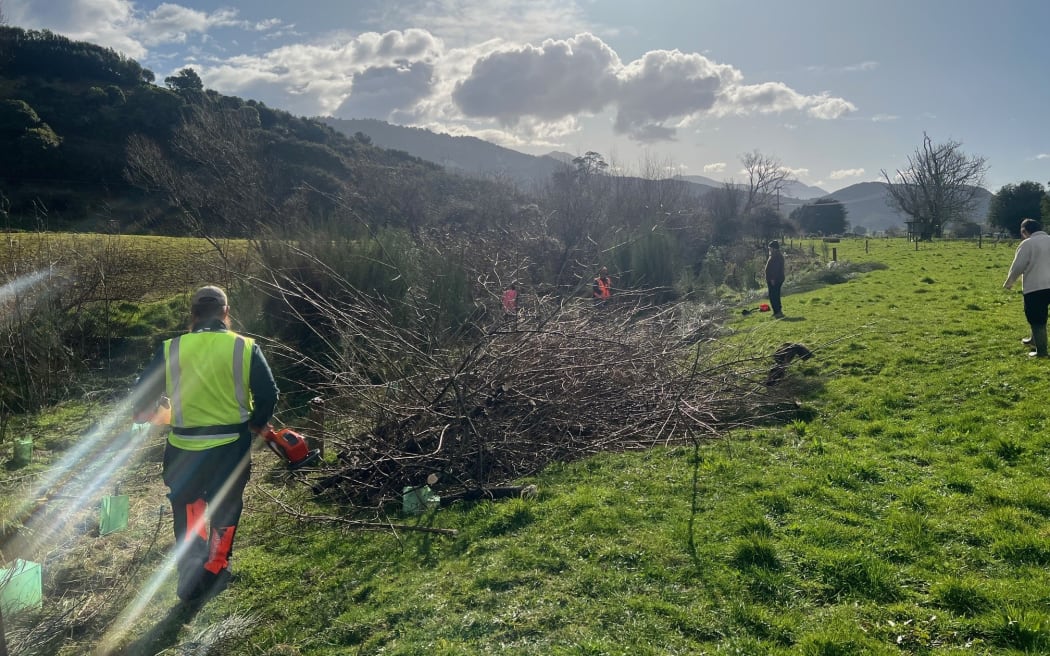
Preparing the land for planting natives Photo: Supplied
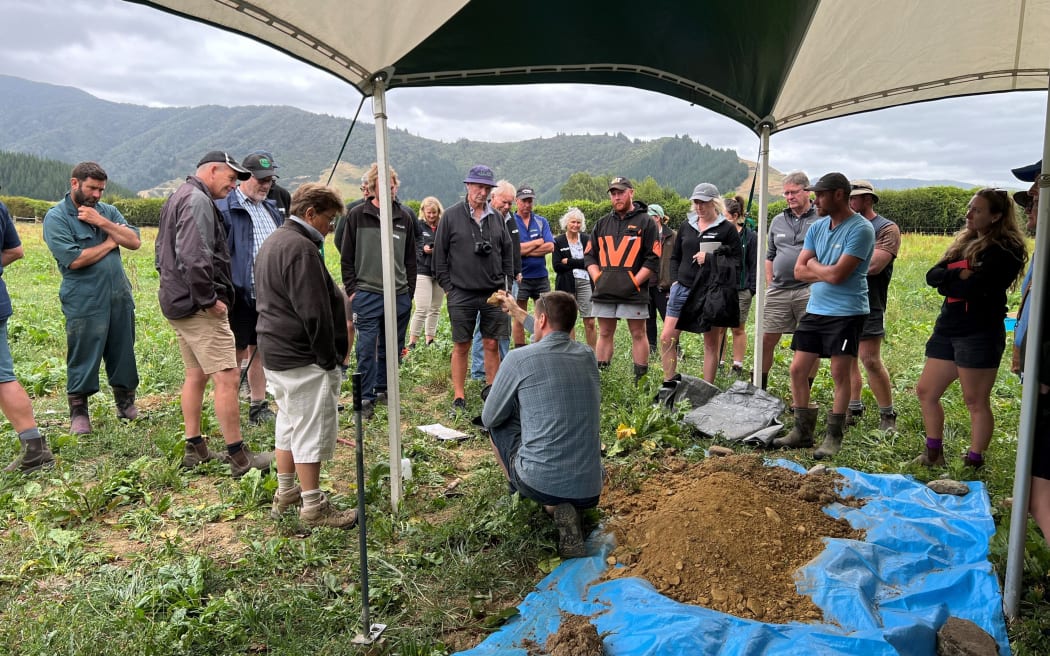
A soil workshop on the Morrison's farm Photo: Supplied
Karen has done a great job of motivating local farmers and getting them to commit to the project.
"There are six farms here that are now involved, and initially we decided that we wanted to do some baseline water monitoring to see what the quality was like," she says.
Learning about the health of their waterways gave the farmers a solid starting point to work from.
Karen said some nitrate and E.coli contamination was picked up in the results, but they discovered that it wasn't all from farmland.
"There's a lot of nitrates coming out of the gorse and broom in the forests ... and some of the E.coli is from the deer and the pigs that play in our waterways."
Since then, they've worked together as a group, to sort out what the best way forward is, to improve environmental outcomes.
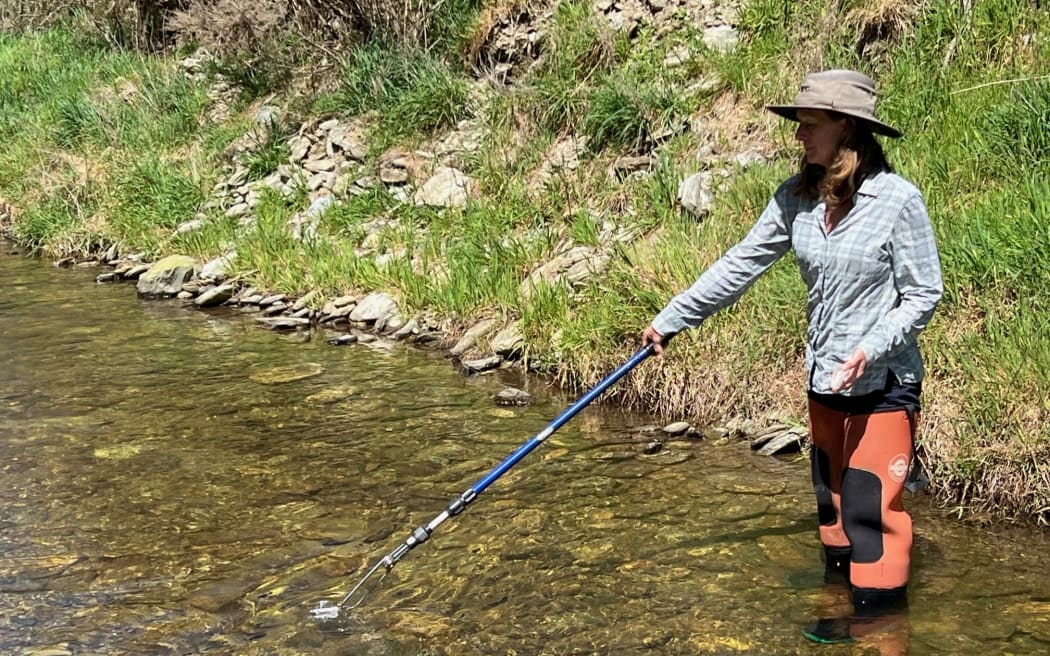
Water samples being taken for monitoring within the Linkwater catchment Photo: Supplied
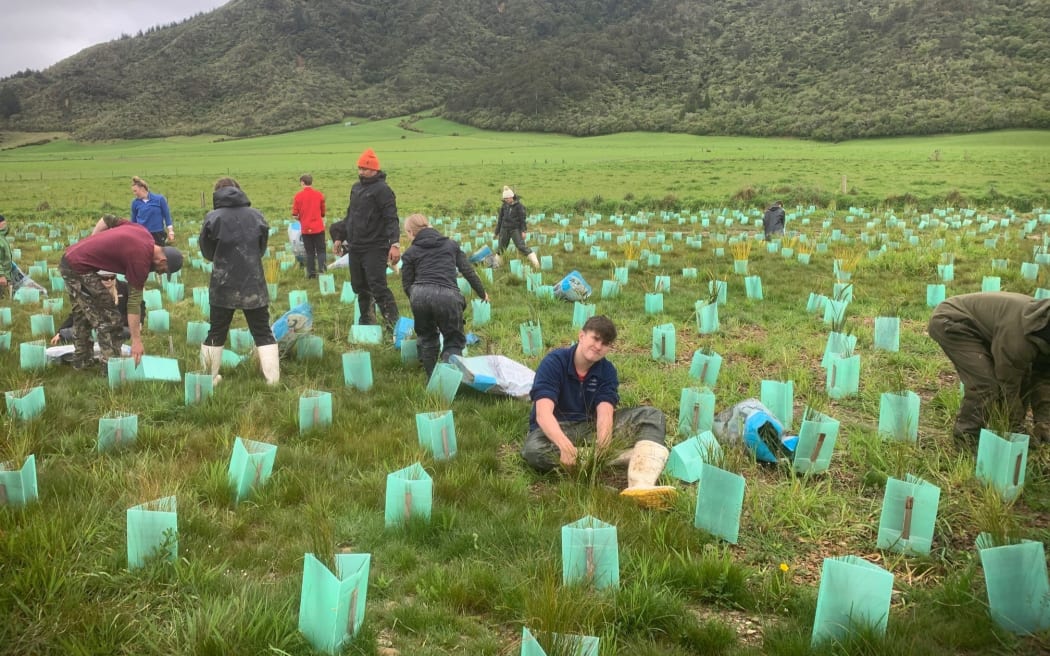
Everyone chips in to get the planting done Photo: Supplied

The farmers got together for a chat before their dung beetle release in Linkwater Photo: Supplied
"There's been waterways fenced off, which we've had funding through the project for, there's a lot of native planting gone in, there's been funding for that too, and most of us have released dung beetles as well. So that was all at the start, and we've now just continued doing that sort of work."
The beetles, which are also subsidised, are known to rapidly break down dung, reducing the time that it is present on the pasture surface, and increasing the turnover of available grazing area.
Karen said it will take at least five years before they'll see any significant results.
"Hopefully [with the beetles] there won't be the runoff if we have a rain event and it also means too that, potentially, we won't need to use so much synthetic fertilisers."
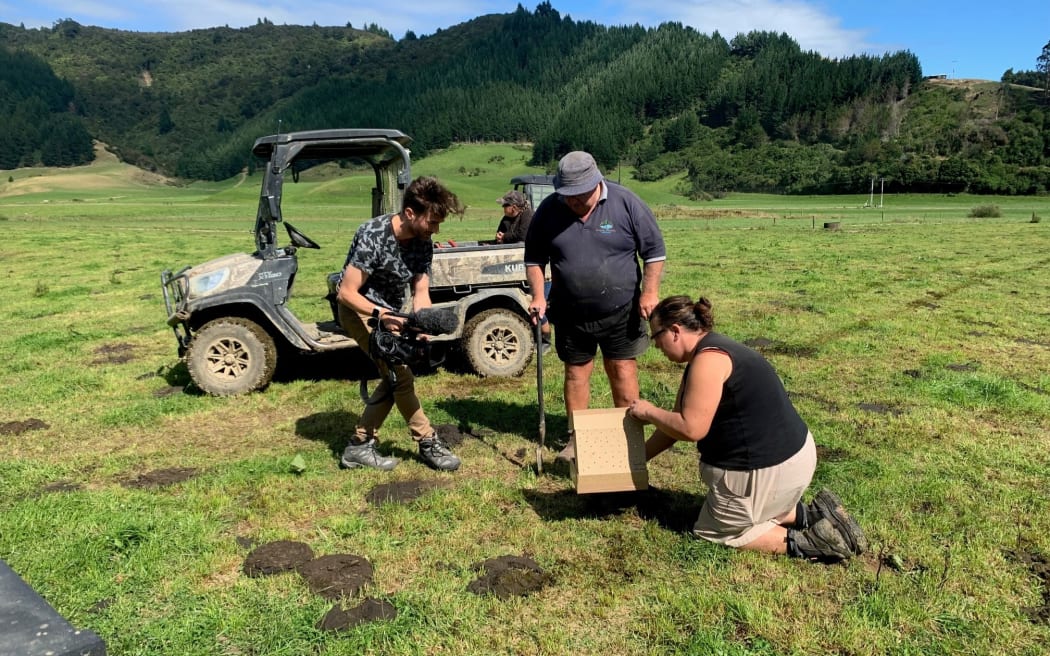
Nigel and Karen releasing dung beetles Photo: Supplied

Photo: Cosmo Kentish-Barnes
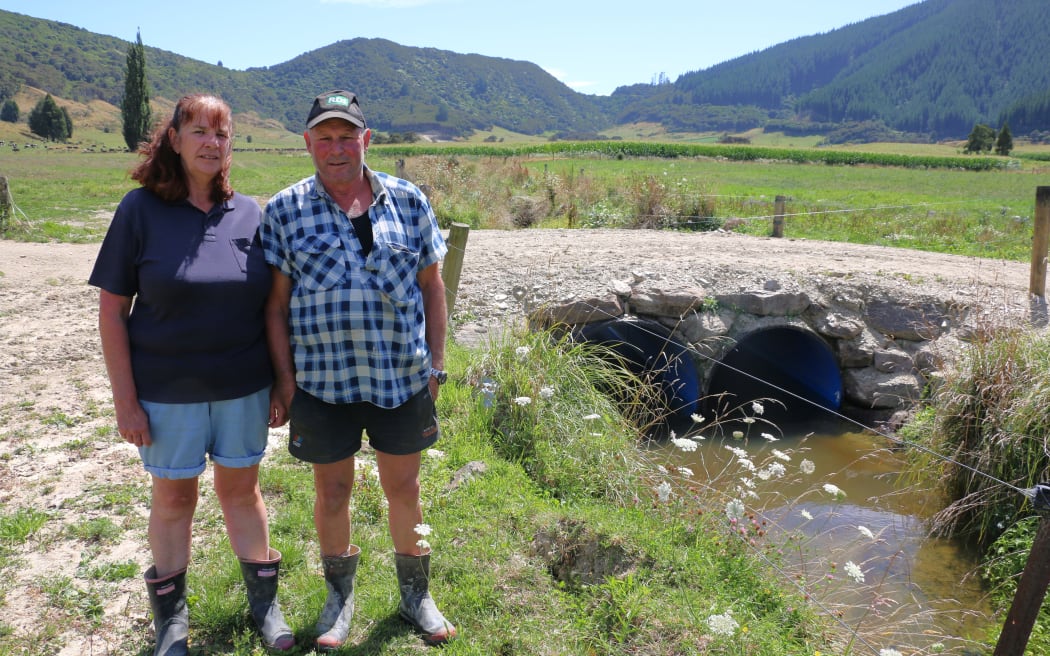
Tanya and Murray Frost Photo: Cosmo Kentish-Barnes
Tanya and Murray Frost have the dairy farm across the road from the Morrisons' property.
"We bought the farm in 2012 and it was quite rundown so we've refenced most of it and doubled cropped every paddock to get rid of browntop," Tanya says.
The Frosts are also involved in the Te Hoiere Project.
"It's going brilliantly. We're all working and as a team in the whole district, which is quite nice." she said.
Thanks to help from the project, they've just finished planting a wetland with natives and fencing it off.
"It was just rushes and wet and the cows used to walk through it," Murray said.
"You got two options." Tayna said. "One, the project will pay for the plants and you do all the work or, you pay for the plants and they'll do all the work."

A wetland that's been planted with natives on the Frost's farm Photo: Cosmo Kentish-Barnes
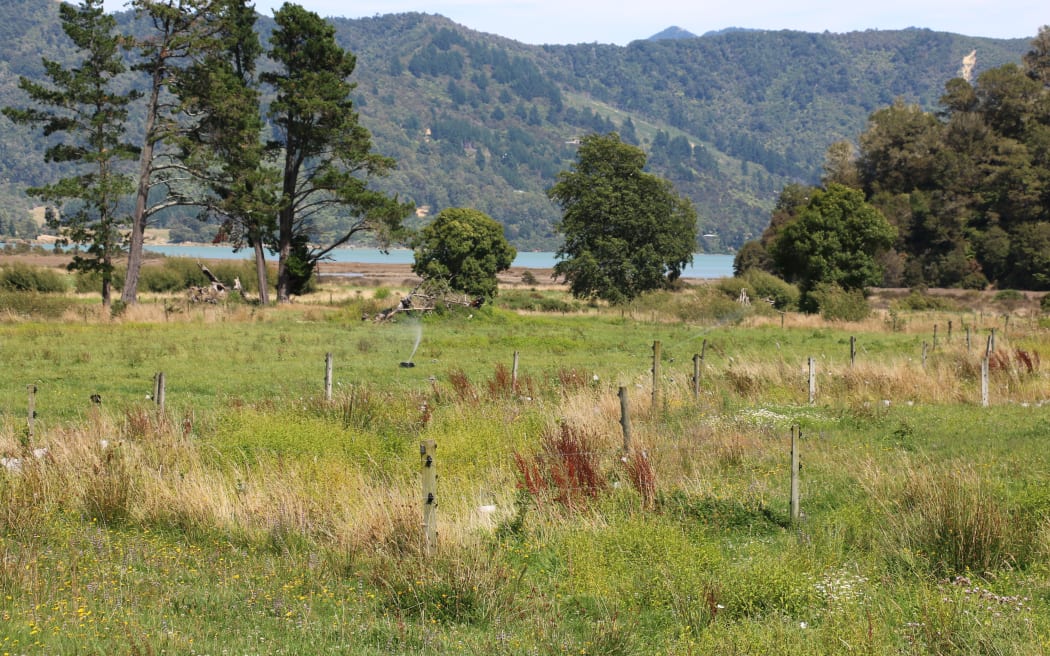
A wetland area leads down to the estuary Photo: Cosmo Kentish-Barnes
Before the project even started, they'd planted hundreds of native trees on the fertile property.
"My father-in-law used to collect native plants out of reserves that were going to be killed off, and he'd come over here in his 80s and plant them out," she says.
Last year they replaced a culvert in a tidal creek that flows through their land as it winds its way to the nearby estuary.
The new and bigger culvert is designed to remediate barriers to fish migration.
Te Hoiere has high freshwater biodiversity values with 14 species of native freshwater fish recorded, including two threatened and seven at-risk species.
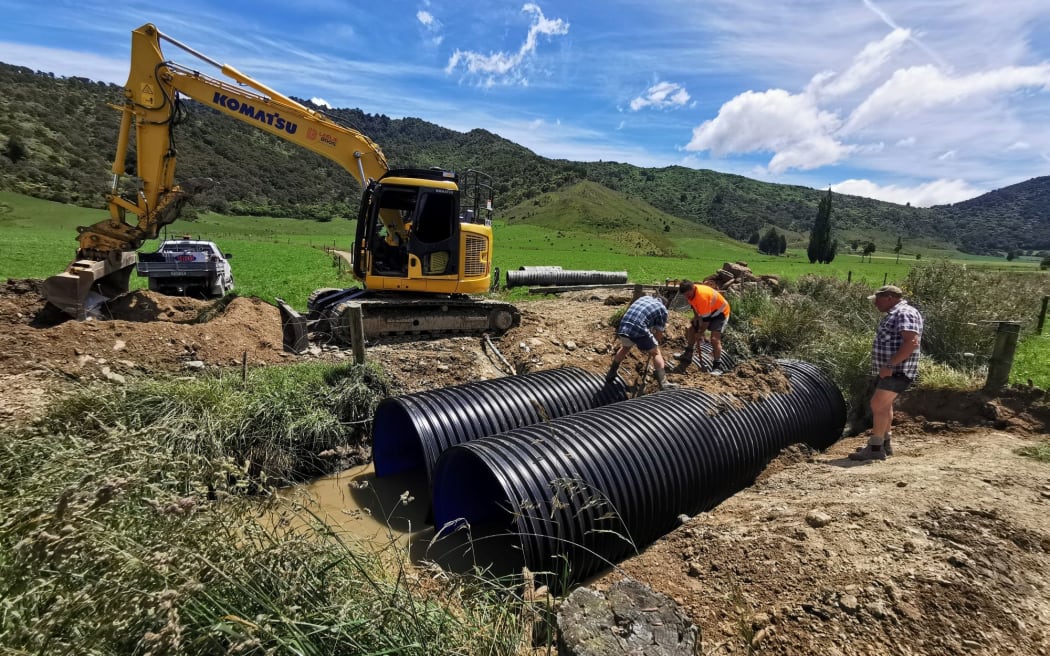
Installating the new culvert, with Murray looking on Photo: Supplied
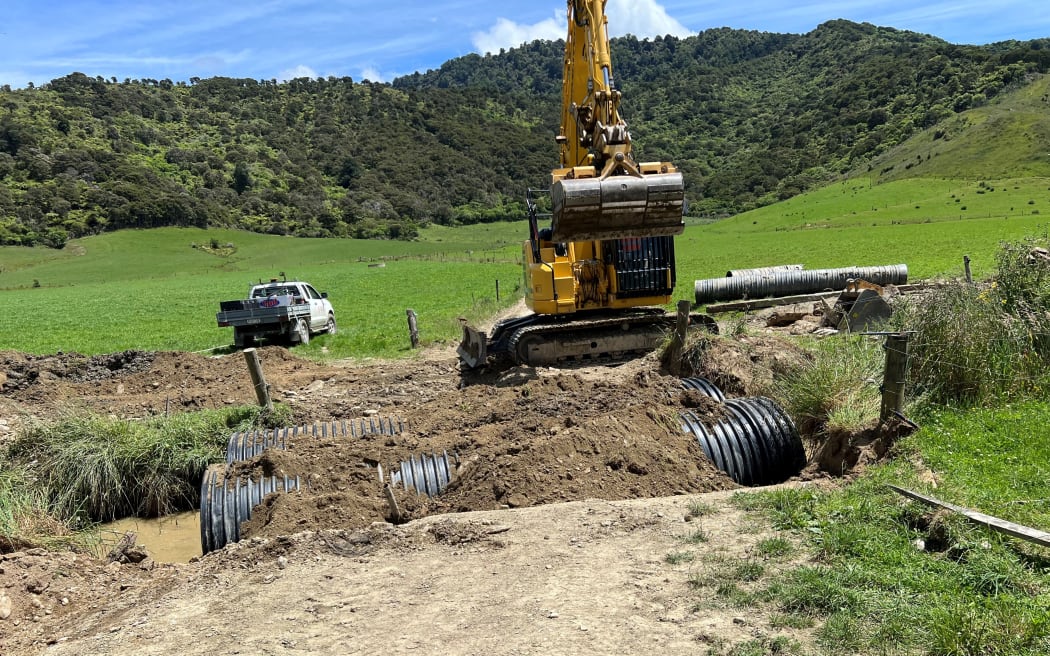
Photo: Supplied
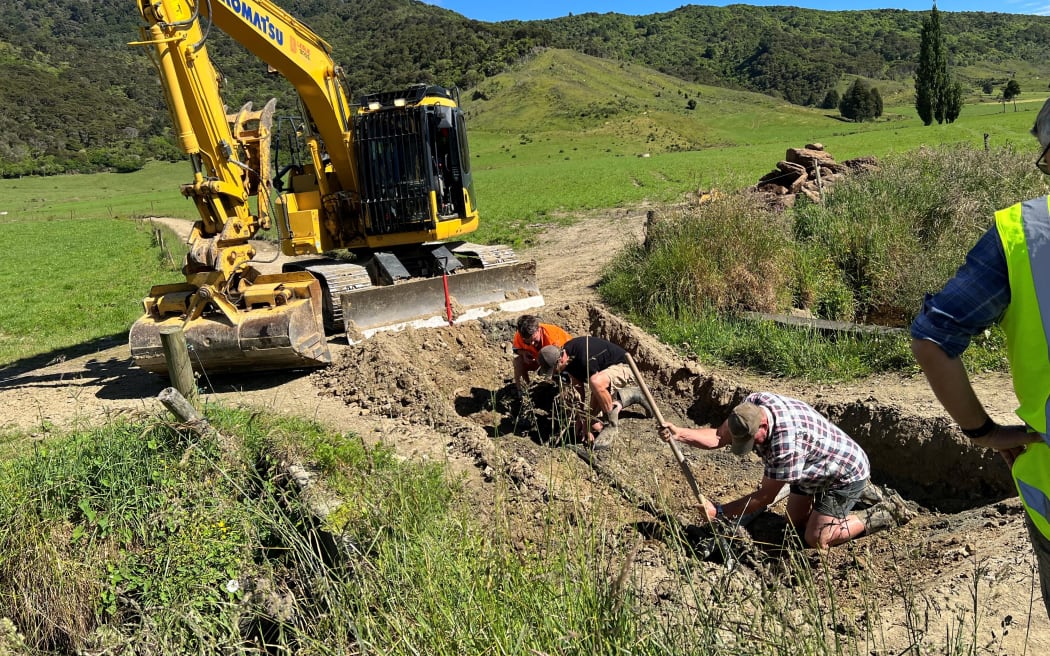
Photo: Supplied
"We've replaced two 800 mill culverts, one was completely blocked with gravel and they've been replaced with two 1500 mill ones," Murray says.
"25 percent of the culverts are buried under the bottom of the creek, so now the fish can swim up through them ... you see quite a few whitebait come through here now."
"They've got a good path up, but we've got some more culverts we want to replace and we'll try and do at least one or two a year," Murray says.
The Frosts paid for the digger and additional rocks required for the work and the project paid for the culverts or pipes.
Te Hoiere/Pelorus Catchment Restoration Project has already assessed about 150 culverts in the catchment for risk and severity as barriers for native fish to migrate.
It's also responsible for erecting 54 kilometres of fencing along waterways and planting out 132,000 native plants.
The project is a partnership between the community, tangata whenua, Marlborough District Council and the government.
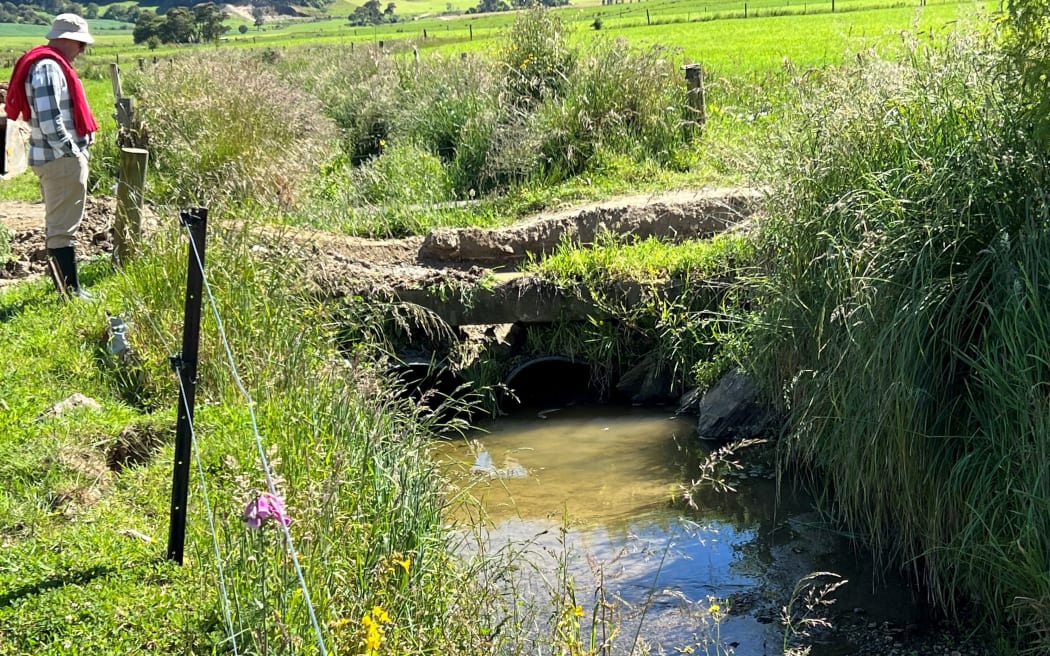
Photo: Supplied
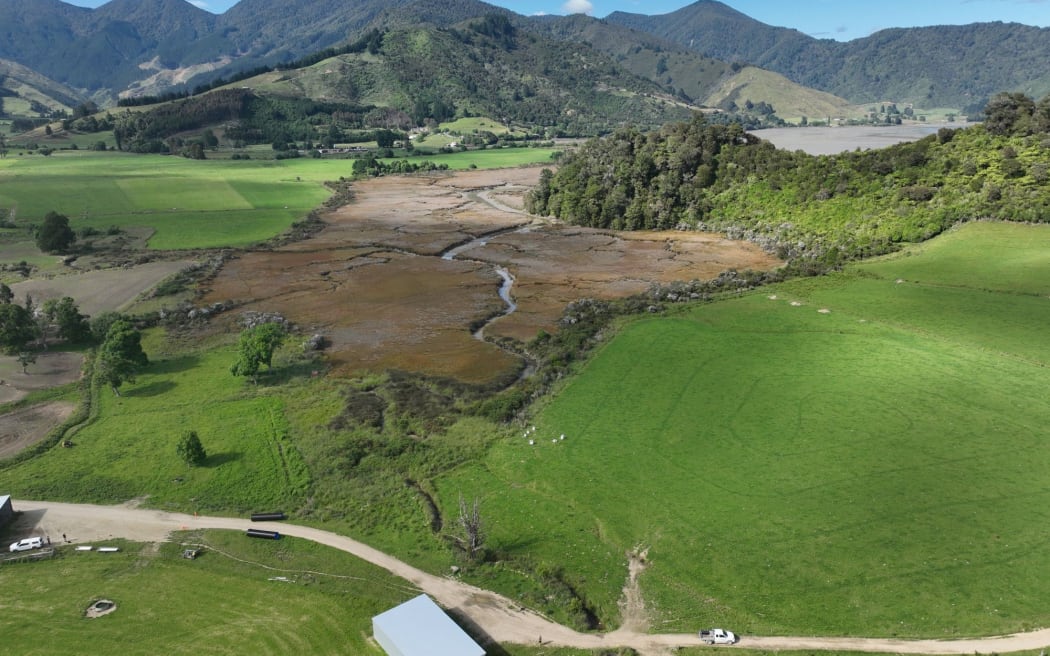
The culvert replacement is just to the right of the shed at the bottom-middle of the screen. It’s a tidal stream, right next to the estuary Photo: Supplied


